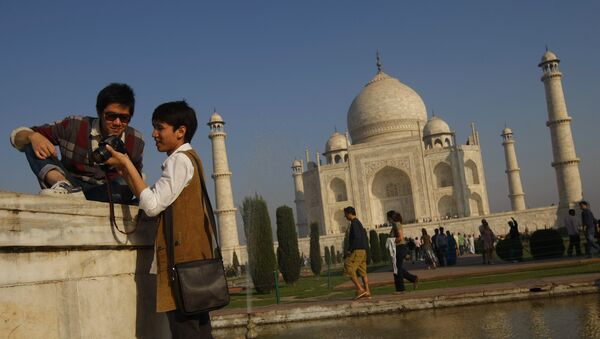Millions of mostly Indian tourists visit the Taj Mahal every year. An average of 10,000 to 15,000 visitors visit the Taj Mahal on a regular weekday, while on weekends the number of tourists balloons to around 70,000.
The hordes of tourists increase the wear and tear on the monument, which is made out of white marble and needs to be regularly cleaned to prevent it from turning yellow from polluted air. The throngs of visitors also reportedly put extra pressure on the tomb's foundations.
"We have to ensure the safety of the monument and visitors as well. Crowd management was emerging as a big challenge for us," a spokesman with the Archaeological Survey of India told AFP.
The new restriction comes after five people were injured this week when huge crowds swarmed the tomb to celebrate the last day of 2017.
"[It is] priceless heritage and if we don't cap the tourist numbers it will be lost for future generations. You cannot control such huge crowds," according to police inspector R B Pandery.
These new restrictions, however, will not apply to foreigners who pay $16 to enter the historic complex. Indian visitors usually pay less than a dollar to visit the Taj Mahal, but will now have to pay the expensive "foreigner" fee if they want to get around the 40,000 visitors per day limit.
The construction of the Taj Mahal is believed to have been completed in its entirety in 1653. It was commissioned by Mughal emperor Shah Jahan to house the tomb of his favorite wife, Mumtaz Mahal, who died while giving birth in 1631.
Tourists who want to view the main crypt, which contains the emperor and his wife's marble graves endorned with semi-precious stones, have to pay an extra fee. The graves do not contain the bodies of the couple, who are buried in a lower chamber.
The architectural masterpiece was declared a UNESCO World Heritage Site in 1983 for being "the jewel of Muslim art in India and one of the universally admired masterpieces of the world's heritage."
It 2007, it was also proclaimed a winner of the New7Wonders of the World (2000 — 2007) Initiative.



